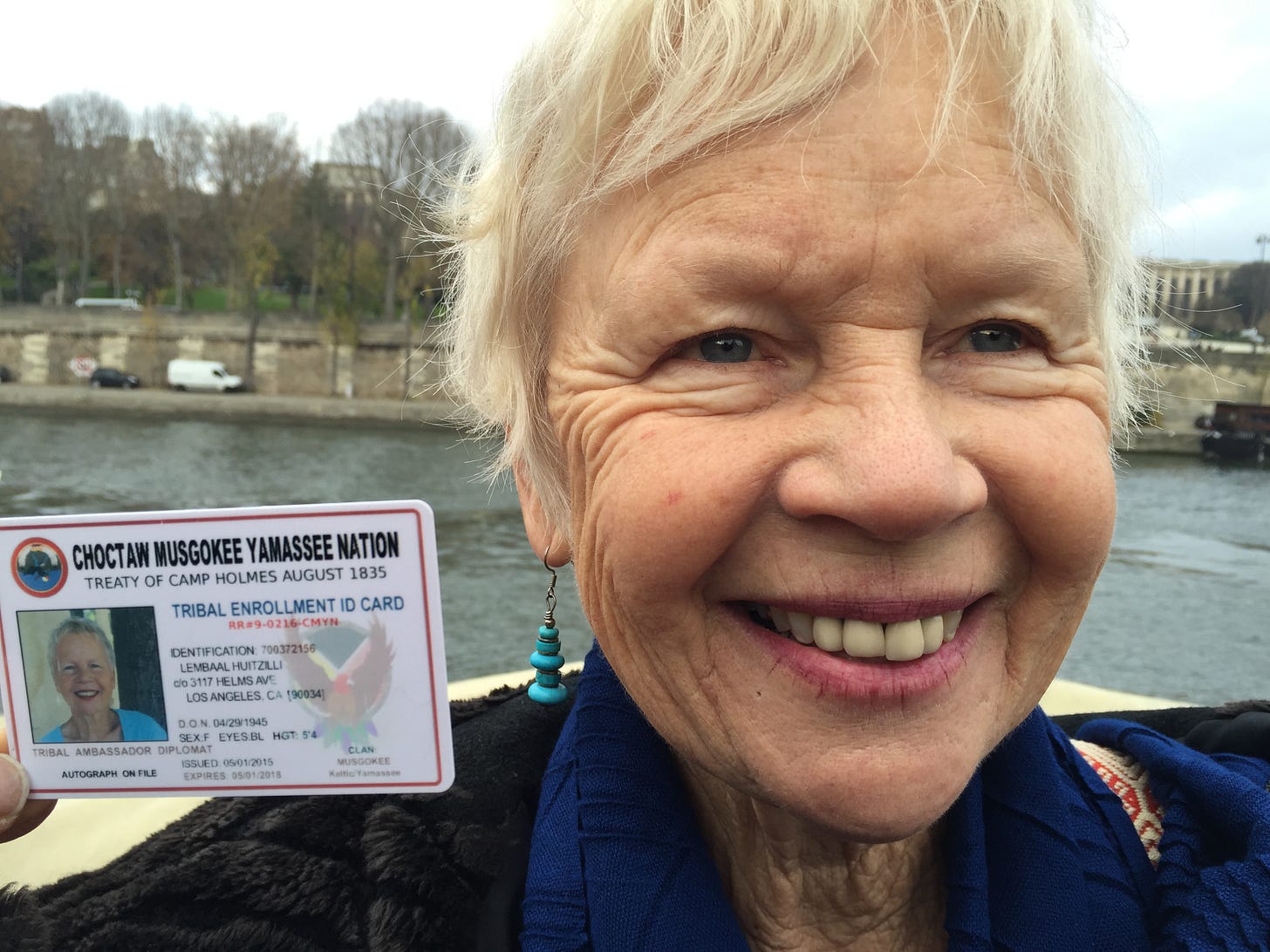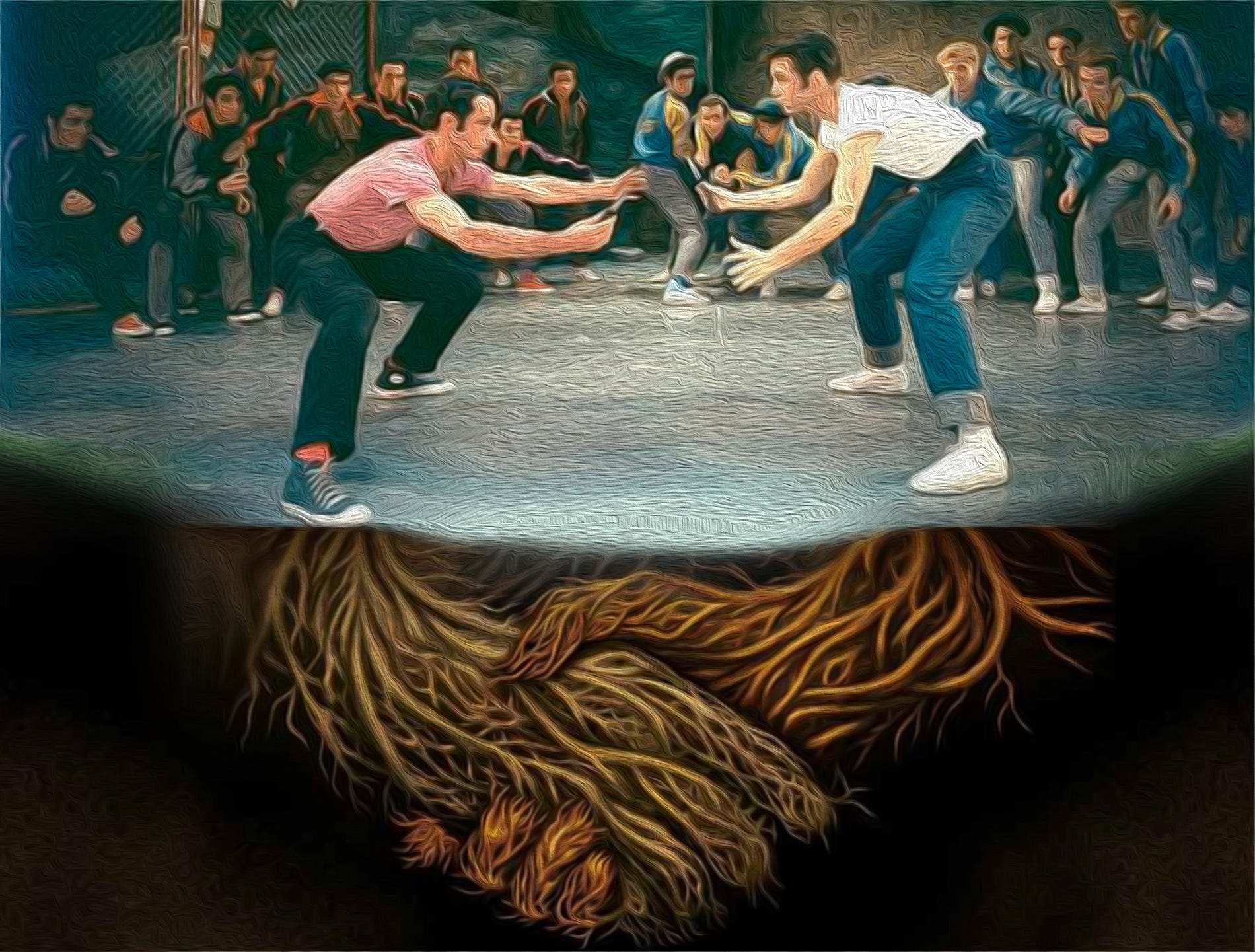You often hear, “Guns don’t kill, people kill.” After another mass shooting that killed 18 in Maine, the U.S. House Speaker (third in line to the President) declared "The problem is the human heart. It's not guns” and, obligatorily, “This is not the time to be talking about legislation.” Last week we looked at the Edo Period in Japan, when an entire culture stepped away from guns for more than a century, choosing martial arts for blood feuds. Japan was no less violent, but death was much less random. In this week’s installment, we dig into the culture of violence.
Researchers analyzed state-level data on mass shootings from 1989 to 2014. They compared mass shootings in states with and without bans on military-style assault weapons and high-capacity magazines. They learned:
States with bans on assault weapons and large-capacity magazines had a 56% lower rate of mass shootings compared to states without such bans;
After controlling for other factors, the assault weapon ban was associated with a 35% reduction in the annual incidence of mass shootings;
Shootings involving semi-automatic rifles produce more casualties; the overall number of crimes committed with rifles of any kind is relatively low compared to handguns;
The 1994 federal assault weapons ban was associated with a reduction in mass shooting deaths; and
The expiration of the ban in 2004 saw more high-fatality mass shootings.
The FBI puts out an annual report on crime statistics in the U.S. The 2022 report provided these additional insights:
Most dangerous places for homicide: Washington D.C.; Mississippi; Louisiana; Alabama; New Mexico; South Carolina; Missouri.
Least dangerous: Maine; Idaho; Massachusetts; Utah; Hawaii.
Texas had the most mass shooter incidents (six), followed by Arizona, Florida, Michigan.
May had the highest number of active shooter incidents, with January and September tied for the least.
Active shooter incidents occurred on every day of the week, with Sunday having the most.
They were more likely to occur between noon and midnight.
Based on location, 46% of mass shooting incidents occurred in open spaces, followed by 28% in commerce, 8% in education and residences, 4% in houses of worship and government, and 2% in health care.
Forty-seven shooters were male, one was female, one was nonbinary, and one was unidentified.
They were between the ages of 15 and 70 years old.
In 50 incidents, 61 firearms were used by shooters—29 handguns, 26 rifles, three shotguns, and three unknown.
Two incidents involved snipers.
Four shooters wore body armor.
Twenty-nine shooters were apprehended by law enforcement, seven were killed by law enforcement, two were killed by armed citizens, nine committed suicide, and three remain at large.
In 48% of the incidents, the shooter had a known connection to the location and/or at least one victim, whereas in 52% of incidents, there was no known connection.
Is it Determined?
It is difficult to generalize. There are millions of guns in circulation, and violence has multiple causes. To stand back and see the big picture, one might start by reading neuroscientist Robert M. Sopolsky’s Determined: A Science of Life Without Free Will:
“Suppose you’re born a crack baby. In order to counterbalance this bad luck, does society rush in to ensure that you’ll be raised in relative affluence and with various therapies to overcome your neurodevelopmental problems? No, you are overwhelmingly likely to be born into poverty and stay there. Well then, says society, at least let’s make sure your mother is loving, is stable, has lots of free time to nurture you with books and museum visits. Yeah, right; as we know, your mother is likely to be drowning in the pathological consequences of her own miserable luck in life, with a good chance of leaving you neglected, abused, shuttled through foster homes. Well, does society at least mobilize then to counterbalance that additional bad luck, ensuring that you live in a safe neighborhood with excellent schools? Nope, your neighborhood is likely to be gang-riddled and your school underfunded.”
Sapolsky asks more penetrating questions. Why is there a greater incidence of violence in the Southern states than in the Northern? Is it tree pollen, the gene pool, mosquitoes and chiggers, or is it mere coincidence? Sapolsky says all of the above, and more.
The link between weather clemency in childhood and adult personality can be framed biologically in the most informative way. The former influences the type of brain you are constructing and will carry into adulthood, as is almost always the case. For example, lots of childhood stress by way of glucocorticoids impairs the construction of the frontal cortex, producing an adult less adept at things like impulse control. Lots of exposure to testosterone early in life makes for the construction of a highly active amygdala, producing an adult more likely to respond to provocation.
***
Murders in the South, which typically has the highest rates in the country, are not about stickups gone wrong in the city. They are about murdering someone who has seriously tarnished your honor by conspicuously badmouthing you, failing to repay a debt, coming on to your significant other—particularly if living in a rural area. As a great experimental example, stage things so that your male subject is insulted by someone. If they come from the South there is a huge increase in circulating cortisol and testosterone levels and an increased likelihood of a violent response to a hypothetical “honor violation.”
Relative to uninsulted Southern subjects, Northerners, no such changes. Where does the Southern culture of honor come from? A widely accepted theory amongst historians makes this point perfectly. While the Colonial New England filled with Pilgrims and the Mid-Atlantic with mercantile folks like Quakers, the South was disproportionately peopled by wild-ass pastoralists from Northern England, Scotland and Ireland.
***
What are some predictors of a society being tight? A history of lots of cultural crises—droughts, famines and earthquakes. And high rates of infectious diseases. The infectious disease link may help explain the finding that groups in the tropics tend towards more in-group/out-group differentiation than in regions farther from the equator. Temperate ecosystems make for cultures that are more temperate towards outsiders.
Suppose one were to ask what were the social innovations that produce such low rates of gun violence in Iceland, Canada, and Denmark? These were, after all, descendants of herding cultures like the “wild-ass” Northern English, Highlanders and Irish.
It could be less a focus on high-caliber, rapid-fire weapons or background checks and more on the social nets that caught more of those crack babies early.
According to an October poll from the University of Virginia’s Center for Politics, 2,008 registered voters were presented with the statement, “The government should have the authority to restrict the number and types of firearms available to the public, irrespective of interpretations of the Constitution.” Democrats responded favorably at 74% to Republicans’ 35%. When asked whether it is acceptable to employ violence to stop political opponents from achieving their goals, 41% of Biden supporters and 38% of Trump supporters responded in the affirmative. The Russian news outlet RT opined, “The closest America has had to a ‘secessionist movement’ [since 1860] is in the form of Californians and New Yorkers fleeing their crime-ridden, high-tax states for conservative country, namely Florida and Texas.”
It would seem that as climate warms and isobars of growing seasons march steadily away from the equator, so too does the tendency towards more in-group/out-group differentiation. This is creating political ecosystems that are less temperate towards out-group members and more inclined to do them harm.
It is a dangerous trend.
Mexcaliber

Many years ago at a bioregional gathering, I had the privilege of meeting Helen Samuels. Helen was an actress, producer, publicist and event organizer living in a wealthy suburb of Los Angeles. One night her daughter's best friend was randomly killed in a neighborhood gang drive-by. After spending time trying to console her daughter, Helen did the unexpected. She barged into each of the rival gang headquarters and invited them to a gang summit—at her Topanga Canyon home! There, she pled with them to end the violence. She counted how many of them never would get to grow old if it continued. And, amazingly, through the example of her courage, she won from the gangs of Los Angeles a grudging, but lasting, truce.
From that moment, Samuels dedicated her life to at-risk youth who wished to improve their lives. Global Village Institute was honored to become a fiscal sponsor for donations to her program and to build a network of gang members and indigenous youth from poverty-stricken urban areas (Mexcaliber). It began with a found art project in the Mexico City landfill where an urban ecovillage, Tierra Viva, launched an edible landscaped Social and Environmental Youth Center constructed from scrap and recycled materials and with a permacultura design.
Her example inspired "Urban Courage," a group of gang members and graffiti artists. With sponsorship from the airline steward association, Helen took gang members wearing traditional Mexican “colors” to the Earth Summit Meeting in Rio de Janeiro, the Global Forum in Manchester, the World Summit for Children, the UNO 50th Anniversary, Habitat II in Istanbul, the Call of the Condor bioregional conference in Peru, Climate COPs in Copenhagen and Cancun, Rio +20, and the World Youth Forum in Vienna. They convened their own global summits at the Fourth World Youth Council (Consejo Juvenil del Cuarto Mundo) in Iztapalapa, a poor migrant area of Mexico City, and in violence-ridden Ciudad Nezahualcoyotl during the summer of 2001. Art defused violence.
The CV Model
Enforcement—suppression and deterrence—is the easiest move for politicians. But quick results do not usually solve problems and in some ways make them worse (more guns in circulation and more training in firearms). Suppression and deterrence depend heavily on the power of the state to punish its citizens.
That approach doesn’t lead to deeper social change. Real and lasting progress requires changing the social norms that perpetuate violence.
In 2000, Gary Slutkin, M.D., former head of the World Health Organization’s (WHO) Intervention Development Unit began an experiment in Chicago, the “Cure Violence,” or CV model. The concept was simple: work upstream.
Violent behavior was viewed as a transmissible disease. The public health community needed to respond by interrupting transmission directly, identifying and changing the thinking of potential transmitters—those at highest risk of perpetrating violence—and changing group norms regarding violence.
The goals were to prevent retaliatory shootings, mediate emerging or ongoing conflicts, and then doggedly follow up to keep the conflicts “cool.”
CV staff began to seek out and treat those at the highest risk—street gangs, abused youth, the mentally ill, recent felons, victims, and young adults between 15 and 25. Peers, known as violence interrupters (VIs), were trained to engage with potential aggressors to change their behaviors. VIs could not be judgmental or be perceived as outsiders, and they could not be police informants. They had to seek out conflict and talk it down. They persuaded their “clients” that there were other ways that did not start a new cycle of more violence that would come back and bite them.
In addition to VIs, CV-paid staff included outreach workers (OWs) to connect high-risk individuals to positive opportunities and resources in the community, including employment, housing, recreational activities, and education. OWs carried caseloads of up to 15 participants. When VIs and POWs met with supervisors, usually daily, they didn’t reveal the identity of their contacts but used pseudonyms (e.g., Individual A, Individual B) to preserve anonymity and trust.
They also worked to change the context. The program used media campaigns, window signs, billboards, and public events such as antiviolence marches and post-shooting vigils. Effective antiviolence social media messaging helped build a general social consensus against violence.
The approach was rational, data-driven, evidence-based, and smart. From 2000-2008, CV expanded to Baltimore, New York, New Orleans, Oakland, Loiza, and Puerto Rico. In 2008, it expanded the methodology to Basra and Sadr City, Iraq. Since then, international programs have been added in Canada (Halifax and Alberta), Colombia (Cali), El Salvador (San Salvador and San Pedro Mazawal), Honduras (San Pedro Sula), Jamaica (St. Catherine North and St. James), Kenya (Nairobi and Rift valley), Mexico (Ciudad Juarez and Chihuahua City), South Africa (Hanover Park), Syria (western and northern), Trinidad & Tobago (Port of Spain), and United Kingdom (London). Cure Violence Global™ has also provided training in violence prevention techniques to representatives from dozens of other countries.
…the CV model works at both ends of the spectrum of behavioral transmission: to both the senders and the receivers of social messages related to violence and the acceptance of violence. The program conducts outreach to faith-based organizations, neighborhood associations, tenant councils, and other community-based organizations in an effort to gain community support and facilitate an understanding of program goals. In addition, the program model includes building a relationship with law enforcement to assist with access to strategic information on crime patterns and to involve the police in the hiring of OWs and VIs.
—Annual Review of Public Health (2015)
If right-wing rabid MAGA politicians are to be condemned, it is less for their princely compensated obstruction to assault weapons bans (thanks, NRA!) and more for their principled preservation of privilege-by-birth and the mindless, continued, cruel torture of those for whom the dice roll ended badly.
As we look to what is happening now in Gaza and the West Bank, we should be asking ourselves whether revenge killing ever solved anything, or whether it is just starting a new cycle of violence that will come back and bite everyone.
There were three basic kinds of comments: pro-Israel, pro-Palestine, and pro-peace. The first two were much the same in tone. They were filled with hate in various forms: sarcasm, calls for violence, triumphalism, derision. … Peace is not the opposite of violence. Peace is the opposite of hate. … I am aware of the fruitlessness of nonviolent protests and peace movements in the past in Israel and Palestine, but now is different. All eyes are on them. Israel / Palestine is now the fulcrum upon which the whole world could swing toward peace.
References
Educational Fund to Stop Gun Violence, Assault Weapons and Large Capacity Magazines
Gramlich, John. What the data says about gun deaths in the US. Pew Research Center, 2019.
Luca, M., Malhotra, D., & Poliquin, C. (2020). The impact of mass shootings on gun policy. Journal of Public Economics, 181, 104083.
Ripple, W.J., Wolf, C., Gregg, J.W., Rockström, J., Newsome, T.M., Law, B.E., Marques, L., Lenton, T.M., Xu, C., Huq, S. and Simons, L., 2023. The 2023 state of the climate report: Entering uncharted territory.
“Silence is the ultimate weapon of power.”
― Charles de Gaulle
Meanwhile, let’s stop killing each other. War and civil conflict are accelerating nearly as exponentially as climate disruption. According to The State of Climate Report 2023 that is not a coincidence. Geopolitical conflict and social unrest go with climate change as surely as unbearable heat, frequent extreme weather events, food and fresh water shortages, vanishing coastlines, and novel diseases.
Ecovillages do not know borders. We are all earthlings in this together. To help our efforts to support peace in the Middle East please contribute here.
To help us resettle refugees from the Ukraine war zone into permaculture farms and ecovillages please donate to the Green Road by going to http://PayPal.me/greenroad2022 or by directing donations to greenroad@thefarm.org. For most of the children refugees, this will be their first experience in ecovillage living. They will directly experience its wonders, skills, and safety. They may never want to go back. Those who do will carry the seeds within them of the better world they glimpsed through the eyes of a child. There is more info on the Global Village Institute website or you can listen to this NPR Podcast and read these recent articles in Mother Jones and The World. Thank you for your help.
As the world enters a new phase of the polycrisis, there is growing recognition that we must undertake a radical change. We must blaze a new pathway that runs the industrial carbon cycle backward — taking CO2 from the atmosphere and ocean, turning it into coal and oil, and burying it in the ground. The triple bottom line of this new world is antifragility, regeneration, and resilience. We must lead by good examples; carrots, not sticks; ecovillages, not carbon indulgences. We must attract a broad swath of people to this work by honoring it, rewarding it, and making it fun. That’s why I write. That is why you support me.
All Patreon donations and Blogger, Medium, or Substack subscriptions are needed and welcomed. You are how we make this happen. Your contributions are being made to Global Village Institute, a tax-deductible 501(c)(3) charity.
Thank you for reading The Great Change.
And thanks once more for your support of the Global Village Institute. Please feel free to share this post, or any part of it.










